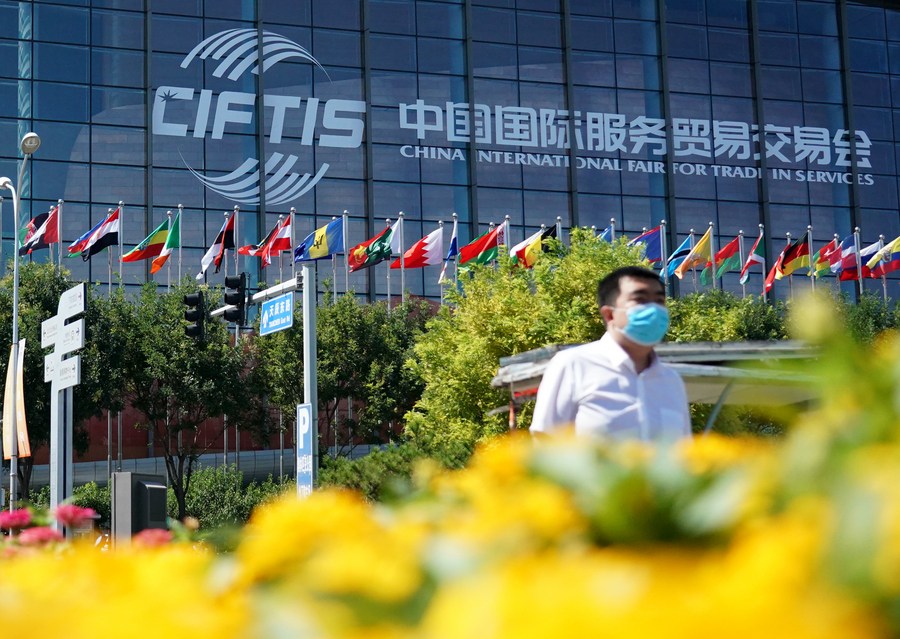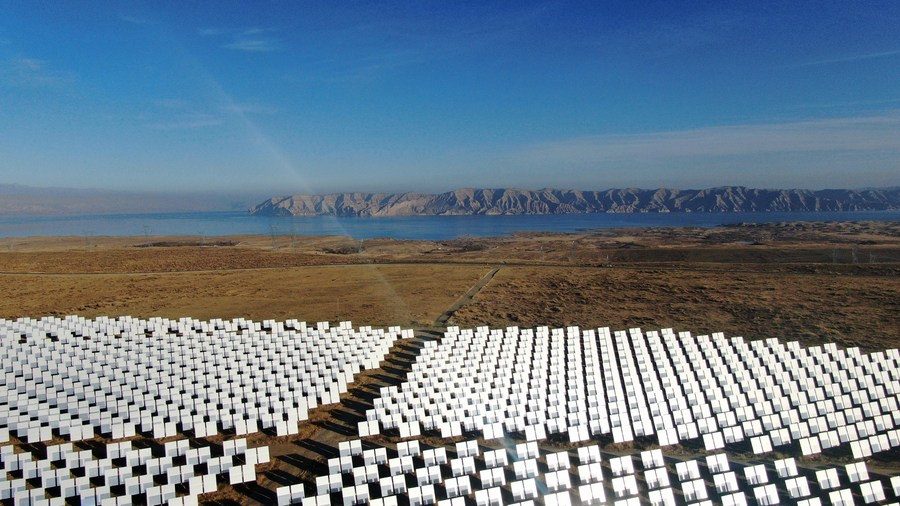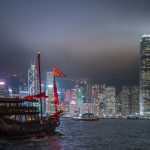–“The 14th five-year plan provides an excellent pathway for a truly modernized economy, a consumer-driven society, and growth which is sustainable as well as strong.”
— According to China’s development blueprint for the next five years, the country will boost and upgrade consumption as part of its strategy of expanding domestic demand and the new development paradigm featuring dual circulation.
— China’s energy consumption per unit of GDP and carbon dioxide emissions per unit of GDP will be reduced by 13.5 percent and 18 percent, respectively, between 2021 and 2025.
China’s 14th five-year plan has resonated with bigwigs participating in the China Development Forum 2021 as economists and business leaders shared their insights on how the country will embark on the future route.
“The 14th five-year plan provides an excellent pathway for a truly modernized economy, a consumer-driven society, and growth which is sustainable as well as strong,” said Noel Quinn, Group Chief Executive of HSBC, at the high-profile forum, lasting from March 20 to 22 in Beijing.
The country has unveiled its blueprint for development in the new era, prioritizing new development paradigm and high-quality development in the five-year plan.
The endeavor to promote higher-level reform and opening-up, further boost consumption-driven growth, strengthen green development is setting a new landmark on its journey to modernization.

OPENING-UP AT HIGHER LEVEL
Angel Gurria, secretary general of Organization for Economic Cooperation and Development (OECD), hailed China’s efforts in opening up the services sector.
“In China, there should be a particular emphasis on the services sector,” which generates over half of the GDP and employs more than half of the workforce, he said, adding that the OECD’s services trade restrictiveness index shows that China has been a top reformer in recent years.
He commended China’s success such as easing foreign entry barriers for life insurance companies and consolidating the regulatory framework for foreign investment through a new law.
John C. Dugan, chair of Citigroup Inc., acknowledged the role of China’s opening-up reform in ensuring the growth of foreign enterprises. The country’s efforts in removing the limit on foreign investment in the financial sector, further opening up the securities market and optimizing the market environment for financial services facilitated the business growth of foreign financial firms, he said.
Also noting the improvements in China’s business environment, Ulf Mark Schneider, CEO of Nestle S.A., lauded the country’s continued focus on creating a level playing field for foreign companies, allowing them to enter the Chinese market in an easier way.
“The reform and opening-up have enabled very significant progress for China toward a sustainable path. It is encouraging that China delivers firm commitment to maintain its opening-up policy and drive reforms dedicated to building an open, inclusive and mutually beneficial market environment,” Lars Fruergaard Jorgensen, President and CEO of Novo Nordisk, told Xinhua in an interview at the sidelines of the forum.
Shortening the negative list of investment will help bring in more foreign investment in the future, noted Dugan, who is optimistic about the further expansion of domestic demand under the Chinese government’s dual circulation policy.

DEMANDS IN MORE FORMS
Expounding on the new opportunities for enterprises operating in the Chinese market, Bai Chongen, Dean of Tsinghua University School of Economics and Management, stressed increasing demands in new forms.
The demands of young consumers in medium and small cities, as well as those of the aging population for healthcare and medicare services, are prominent, Bai said, adding that high-quality products and services in the fields of culture, physical fitness and entertainment will help generate new businesses for all kinds of companies.
“I noted the strong emphasis in the 14th five-year plan on consumption-based growth,” said Axel van Trotsenburg, managing director of Operations at the World Bank.
According to China’s development blueprint for the next five years, the country will boost and upgrade consumption as part of its strategy of expanding domestic demand and the new development paradigm featuring dual circulation.
The scale of the Chinese market has attracted foreign companies, and as the country’s middle-income population reaches more than 500 million in 2022, the Chinese economy will realize an even higher growth in 2025, Dugan said.
As China aims at increasing the supply of middle and high-end products and services, foreign investors are provided with more market opportunities in the fields including high-end manufacturing, high-technology, industrial upgrade, modern services and high-quality consumer goods, said Jack Chan, chairman of EY China, in an interview with Xinhua at the sidelines of the forum.

GREEN GROWTH
Having shifted to green, high-quality development, China is unfolding a landscape where “lucid waters and lush mountains are invaluable assets.”
Through years of persistent efforts, China has seen impressive progress in moving toward a greener economy with measures to improve the industrial structure and maximize the use of clean energy.
The country, for instance, ranks first globally in newly installed wind power capacity and is also a global leader in the production and use of solar energy and hydropower.
Hailing China’s notable achievements in reducing pollution and carbon emissions, van Trotsenburg said the world is looking forward to China’s implementation of its 14th five-year plan.
Amid efforts to peak carbon dioxide emissions by 2030 and achieve carbon neutrality by 2060 as promised, China has set new targets in its development plan to improve the industrial structure and maximize the use of clean energy.
According to the five-year plan, China’s energy consumption per unit of GDP and carbon dioxide emissions per unit of GDP will be reduced by 13.5 percent and 18 percent, respectively, between 2021 and 2025. It also aims to increase the share of non-fossil energy in total energy consumption to around 20 percent.
Amin H. Nasser, president and chief executive officer of Saudi Aramco, said his company’s priorities overlap with China’s in terms of sustainable development.
Aramco’s research center in Beijing is already working with Chinese universities and companies in developing cleaner engine systems, and focusing heavily on using and removing greenhouse gas emissions, said Nasser. He also mentioned technological cooperation in other key areas, including carbon capture, usage and storage, to achieve low carbon ambitions.









